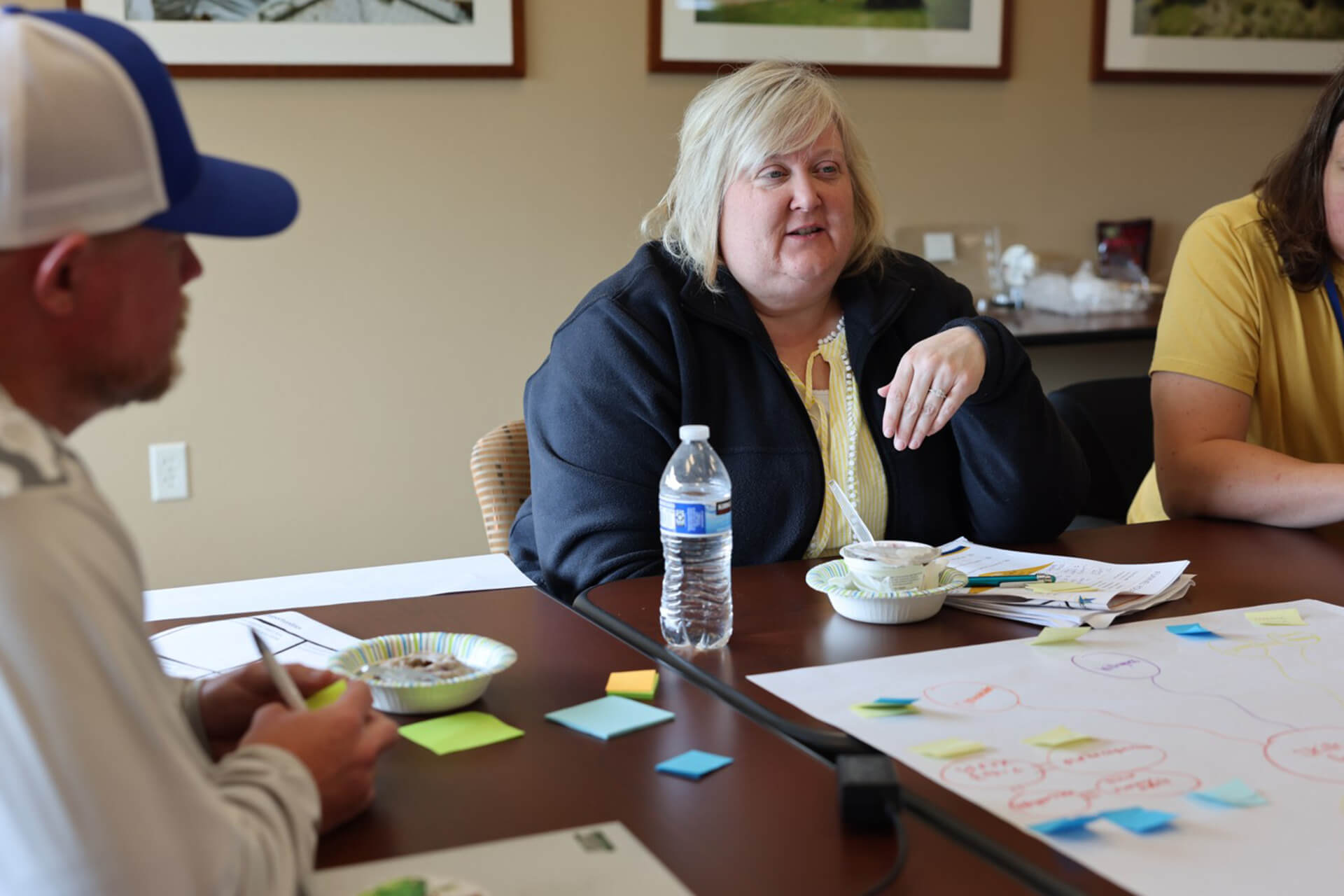06.30.25
One Story, Many Lenses: How EDventures Sparked Conversations About Bias in Education
By Jane Vangsness Frisch, Vice President of Workforce, FMWF Chamber

Education professionals sit around a table during the 2025 EDventures program to discuss bias in education.
Explore how EDventures sparked conversations about unconscious bias and inspired educators to build more inclusive, student-centered classrooms.
Every day, educators and students bring their own stories, experiences and perceptions into the classroom. These lenses, often unconscious, influence how we teach, learn and connect with one another.
To understand how powerful these hidden biases can be, consider this riddle:
A father and his son are in a severe car accident. The father dies instantly. The son is rushed to the hospital and taken into surgery without delay. As the surgeon prepares to operate, they say, “I can’t perform this surgery—he’s my son.”
The question is... Who is the surgeon?
Pause.
Who is the surgeon?
If you hesitated, you’re not alone. Many do. Because many automatically picture a man in the role of surgeon. The answer is simple: the surgeon is the boy’s mother.
This brief moment of surprise reveals something deeper: our assumptions can run so deep we don’t even notice them. And that’s the essence of unconscious bias. It is a reminder that the stories we carry—whether based on gender, experiences, race, background or roles—can influence how we see the world.
From Bias to Belonging: A Juneteenth Learning Journey
Part of EDventures, held June 16–20, 2025, educators participated in a special session on June 19 – Juneteenth – dedicated to exploring unconscious bias and the power of inclusive education. In this reflective session, participants explored how to make sure every student feels like they truly belong.
Participants dug into honest conversations about how assumptions—spoken or not—can impact the expectations we place on students, the stories we believe about their potential, and the systems we uphold, often unintentionally.
Why Bias Matters in Education
Unconscious bias is part of being human. It’s how our brains make quick decisions, shaped by everything from childhood experiences to media messages. But unchecked, those biases can impact how we interpret behavior, assign value, or open doors—or close them.
For educators, understanding these dynamics isn’t just professional development—it’s a calling. When we actively examine our own lenses, we unlock new ways to reach students, especially those who’ve felt overlooked or misunderstood.
From Awareness to Action
Bias isn’t a flaw. It’s a function of the brain. But awareness is power. When educators pause to examine knee-jerk reactions or long-held beliefs, we can interrupt bias in real time—and replace it with curiosity, empathy and inclusion.
Even small shifts can spark meaningful change. A more inclusive syllabus. A question reframed. A student’s story heard with fresh ears.
What You Can Do
Creating truly inclusive classrooms doesn’t require perfection—it requires intention. Each choice you make shapes a culture where every student feels seen, valued and empowered to succeed.
Here’s how you can keep the momentum going:
- Harvard Implicit Association Test (IAT) – A free online tool to help uncover hidden biases related to race, gender, age and more—ideal for personal reflection or group discussion.
- EdChange – Multicultural Pavilion – Created by Dr. Paul Gorski, this site offers a wide range of free training activities, reflective tools and lesson materials to support equity and anti-bias education.
- FMWF Chamber Inclusion Insights Sessions – Led by the Fargo Moorhead West Fargo Chamber, these interactive sessions create space for educators, employers and community members to explore topics like unconscious bias, inclusive leadership and cultural awareness.
Together, We Can Build Belonging
Creating inclusive learning environments isn’t a one-time workshop. it’s a lifelong commitment. But when educators lead with awareness, compassion and courage, they create ripple effects that reach far beyond the classroom.
Let’s reimagine education as a place where every learner belongs and where every teacher has the tools and support to lead the way.
Eager to learn more? Get involved in The Chamber’s workforce programs, events and initiatives:
SHARE
More Stories
Upcoming Events
Subscribe to email newsletters
